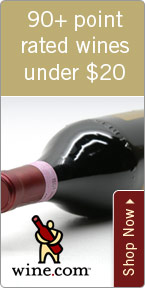The Internationalization Of Wine

Wednesday - May 05, 2010
| Share
 Del.icio.us
Del.icio.us
|
Let’s return to the subject of the “internationalization” of wine. I was asked last week if I still thought that wine around the globe is becoming more homogeneous, or if I thought that the pendulum was swinging back with more individualistic winemakers trying to retain the typicity of the wine and the region.
My answer is that I see even more of the international style than ever, and for several reasons.
One reason is the ever more ubiquitous “flying winemaker.” These are the famous winemakers and consulting oenologists who are paid to fly all over the globe to influence the wine-making at a certain property. They come from all over the map:Americans, French, Australians and Italians who hop from region to region to improve the quality of the properties they work with. By and large they are quite successful. The quality of the wine improves from the standpoint of consistency as well as ratings.
But are better ratings a sign of more individualistic style or a common pattern of taste?
Let me put it this way. I attended a tasting where a single wine consultant’s wines all were tasted side by side. They were from all over the world: Bordeaux, Italy and Chile. They were from many different varietals, of course. But somehow, when you tasted them, you could see the common filament that held them together. It was a winemaking style that pervaded all the wines. They seemed as if they could all come from one continent. Now is that better for diversity or not?
In truth, many of these highly talented individuals are hired for one thing alone: to make the wine more marketable. It is the “halo” effect. It reminds me of the “Oprah effect” - whenever she endorses something, that product sees a meteoric rise in sales and popularity. The same goes for some of the most-famed winemakers. I don’t begrudge their success. They should be paid well for it. Diversity, I would say, is not part of it.
Another factor that is unmistakable in the internationalization of wine is climate change. I will contain myself from overstating its effects because it will take many vintages for us to completely understand them. But I do think that recent warmer growing seasons in many of the classical wine-growing regions of the world, especially those that were once considered “marginal” climates, have made it more difficult to tell between “old” and “new” world. Even in France and Italy we’re seeing wines that are frequently more than 15 percent alcohol, where once they were lucky to have wines that reached 13 percent. This is not only a function of the vintage, but also the fact that winemakers are chasing flavor. The only way to get this flavor is through ripeness; the riper the grapes, the more sugar in them; the more sugars, the higher the alcohol.
I do not want to rail against the internationalization of wine. It is happening, despite any writers calling attention to it. It only works if there are those who like to drink the wine.
Enjoy wine you like. For me, I will keep to my distinct “messages in a bottle.”
Recommended international style: 2008 Marquis Philips “GG” Grenache ($17) big and exotic nose of sweet black plums and compote. Thick on the palate with dense blackberry flavor and very polished. Distinctly Old World: 2008 Kermit Lynch Cotes du Rhone ($14) Spicy Grenache with a nice dollop of Syrah. Herbs and dried berries come to the fore with a velvety texture and the finish of plum pits and cranberry.
Roberto Viernes is a master sommelier. E-mail .(JavaScript must be enabled to view this email address)E-mail this story | Print this page | Comments (0) | Archive | RSS Comments (0) |
Most Recent Comment(s):












